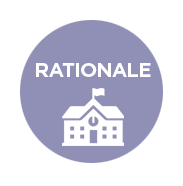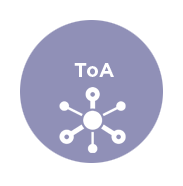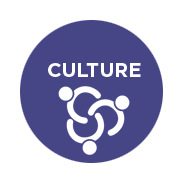How do you get more teacher buy-in? When implementing change, how do you get teacher engagement and adoption?
Recall an instructional program that promised to improve teachers’ instructional practices and increase student learning outcomes but was allotted barely sufficient time, resources or support for full integration in classrooms. The program, regardless of how well designed, probably teetered between pressures for immediate results and demands of time, skill and actions required for a successful implementation. When this lack of or sporadic support occurs, we see pockets of excellence, in which a handful of teachers implemented the program well, or deserts of non-use, in which teachers do not engage with the new program. The book, The Fifth Discipline: The Art and Practice of the Learning Organization, outlines key strategies and practices required to achieve meaningful change and transform schools into “learning organizations” that renew themselves. Peter Senge (1990) proposes that schools must develop five disciplines: personal mastery, mental models, shared vision, team learning and systems thinking. The concept of systems thinking is the cornerstone of change. Systems thinking considers discrete functions and interactions between components. In schools, systems thinking addresses the interactions among people, processes, practices and learning goals. Systems thinking to promote change or transformation includes:
- Selecting and prioritizing initiatives that focus on your most crucial areas for improvement
- Creating coherent transformation activities that addresses all involved in the process
- Involving stakeholders in the change process without causing apathy or burnout
- Understanding how and why people change
- Gleaning best practices from other successful Magnet implementations
- Embracing the challenges and rewards of collaboration with diverse teams to redesign the Magnet program
Change is a process, not an event. Change involves developmental growth. Change is accomplished by people. Change is a highly personal experience. Teachers naturally relate to change or transformation based on how it will affect them personally and their current classroom practice. The focus of transformation support should be on people. We tend to see school improvement in terms of a new curriculum or a new strategy; however, innovation is about how the whole school engages with the new curriculum or strategy or idea. Books, materials, spaces or technology alone do not make change; people make change by altering their behavior. Each teacher responds to a new program with unique attitudes and beliefs, and each person uses a new program differently. The Concerns-Based Adoption Model (CBAM) provides techniques to gauge staff concerns and program use during the implementation of new innovations or reform initiatives. The underlying premise of CBAM is implementing a new initiative that requires more than merely providing materials and resources. Whole-school change requires the understanding that each person involved responds to the new initiative with unique attitudes and beliefs.
- Stages of Concern: Lists the stages of staff members’ attitudes and beliefs toward a new program or initiative.
- Levels of Use: Outlines levels of use regarding how well staff are using a program. Levels range from nonuse to advanced use.
Every education innovation should include an implementation plan.
1. Before even starting the transformation, apply the Stages of Concern and Level of Use to define ways to follow up on the new initiatives.
a. How will you identify teachers’ Stage of Concern and levels of implementation or use?
b. How often and for how long?
c. Who determines teacher concerns?
d. How will he or she be trained?
2. Once teacher concerns are identified, design a support plan.
a. How will you provide support?
i. For example, if a teacher is concerned about getting proper equipment, who is responsible for ordering it and following through to see that it is received?
b. Who will provide any necessary retraining?
c. Who will provide the coaching and guidance for teachers to be successful at this new task?
d. Who will identify teachers who can help other teachers?
3. As you plan, be sure to determine the resources necessary for the support.
a. Will those teachers be given free time to aid others?
b. How will this be arranged? By whom? For when?
c. Are the time, people, materials or money available for ongoing support of the change?
i. Where can these resources be found?
ii. Can the district help? Parents? Community partners?







